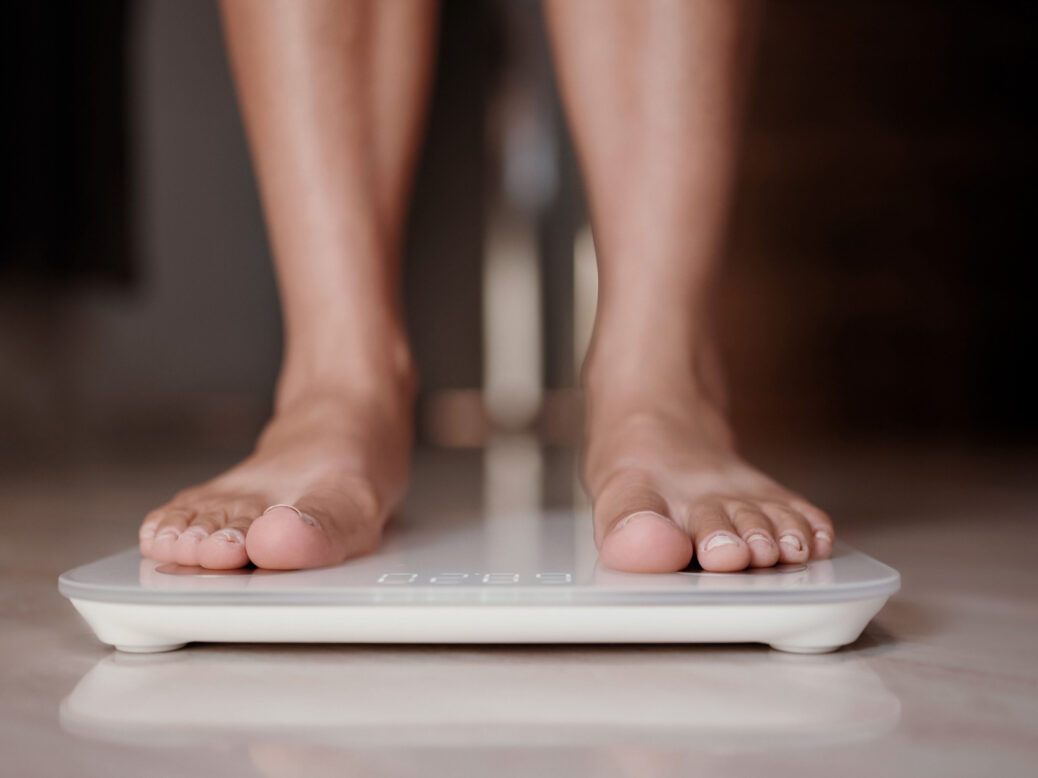
BMI remains an important measurement system, particularly at the population level when assessing health with regards to body mass. To calculate BMI, only a height and weight measurement are needed, which means that it is an inexpensive, accessible, and easy-to-measure metric. These factors are important when trying to assess lots of people in a population, either when screening or assessing risk. Even though BMI is not a perfect measure of obesity, it can help to indicate that further screening is required.
Deposition of visceral fat around organs such as the liver and the pancreas leads to insulin resistance, pre-diabetes, and Type 2 diabetes. Unfortunately, it is challenging to measure visceral fat, and this is why, as clinicians, we use additional measures to supplement BMI, such as waist circumference, which correlates with visceral fat and can provide clinical clues to the presence of a metabolic disease such as Type 2 diabetes.
Two individuals from different ethnic backgrounds can have the same BMI but different amounts of visceral fat, hence we need to individualise screening and use additional measures such as waist circumference and consider factors such as ethnicity to look for the metabolic sequelae of obesity – in other words, conditions that can arise from obesity. However, BMI is a good starting point for the assessment.
BMI is a very good measure of the mechanical complications of obesity – people with a higher BMI typically present with higher prevalence of chronic back pain, knee osteoarthritis, and obstructive sleep apnoea. It also correlates well with an increased risk of at least 13 types of cancers.
Early intervention to achieve or maintain a healthy weight is important to prevent other conditions associated with obesity, such as Type 2 diabetes, fatty liver disease, and high blood pressure.
At the diabetes and weight management app Roczen, we use BMI as part of the initial screening tool for eligibility for our programmes and to give an indication of someone’s weight related to height. We also use the BMI to ensure we are prescribing obesity medications such as semaglutide responsibly – National Institute for Health and Care Excellence (Nice) guidelines have safety criteria regarding such medications, such as a requirement to have a BMI of at least 35, or 30 in some exceptional cases.
Given that obesity is a problem of epidemic proportions, rather than replacing BMI completely we must consider it as one of many measures to determine individual risk and apply it where appropriate. BMI can be a good first indicator as to whether a further assessment is warranted, because alternatives to BMI to assess the amount and distribution of fat (such as DEXA scans – a medical imaging test that can analyse body composition) can be expensive and are not as accessible to most of the population.
Additionally, most health systems internationally use BMI as it is recommended by the World Health Organisation, offering the further advantage that its benefits and limitations are easily understood across the world. While it is not a panacea, when used in conjunction with other tests the BMI has a place in clinical care as an important starting point to assess risk and inform the prevention of disease.
This piece is part of a debate on the BMI scale. Read the other half of the debate here.
This piece first appeared in a Spotlight Healthcare print report on 13 October 2023. Read it here.





